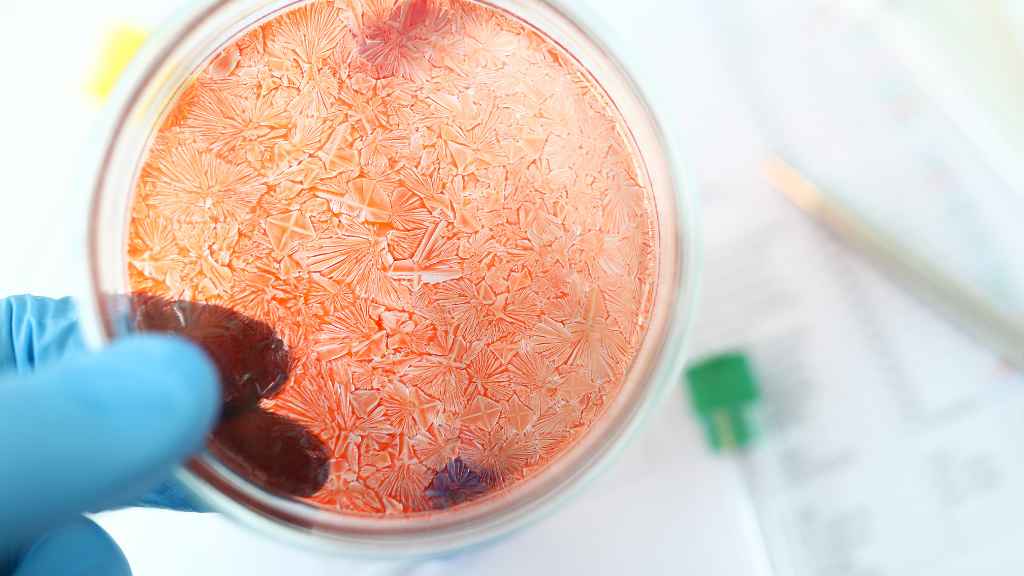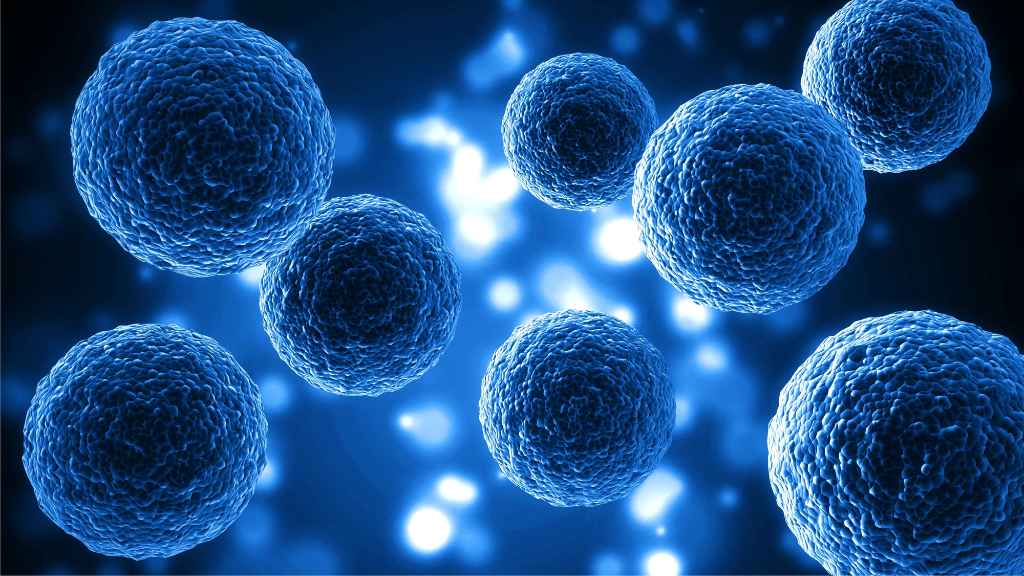CELL BASED ASSAY
- cell proliferation
- Apoptosis
- cytotoxicity assays – ISO 10993-5:2009
- high throughput screening assays
- receptor activation
- cell signaling
- Expression assays

Picture this: You’re at the helm of a microscopic universe, where cells are the citizens and you’ve got the power to peek into their lives. That’s cell-based assays for you – they let us eavesdrop on cells, seeing how they chat with drugs or react when things go south.
Think of them as reality TV for scientists; every move is monitored, analyzed, and can lead to breakthroughs in medicine. But like any good show, there’s drama – challenges that we’ll tackle head-on together.
In just a few scrolls, you’ll dive deep into types of cell-based assays and why they’re crucial in research labs everywhere. We’ll uncover what makes these tiny tests mighty tools for discovery. So, buckle up; by the end of our journey today, you’ll be fluent in speaking ‘cell’. Ready?
Understanding Cell-Based Assays
Imagine your body as a bustling city, and cell-based assays are like the urban planners tracking how well everything functions. These powerful tools let scientists’ peek into the cellular responses of our own biological metropolis.
Cell-based assays, for those new to the term, are experiments that use live cells to measure effects or activities of compounds like drugs or toxins. Think of them as mini reality shows where cells star in their own survival drama, with researchers eagerly watching who thrives and who doesn’t when introduced to new substances.
A study published in NCBI showcases these assays’ importance by highlighting their role in evaluating potential treatments before they reach clinical trials—kind of a VIP backstage pass to drug development’s early stages.
Why Are Cells Used?
The beauty lies in relevance. Cells used in these tests come from tissues resembling those affected by diseases under study; it’s like testing out traffic patterns on small-scale models before re-routing an actual highway.
This hands-on technique provides us with genuine information that other techniques are unable to provide. By observing living cells react, we get clues about how proposed therapies might perform inside humans—minus any guesswork.
Detecting Cellular Responses
Detection is key here—it’s not just what happens but also being able to spot it. Scientists often tag molecules with fluorescent markers so they light up under certain conditions—a bit like using glow sticks at a concert—to track changes easily.
This illumination helps pinpoint precise reactions within our cellular cities’ complex landscapes quickly and accurately. Whether scouting for harmful side effects or confirming beneficial actions, lighting things up simplifies spotting successes amidst potential chaos.
Remember: behind every breakthrough medication stands a series of meticulous cell-based assays working hard backstage.
Types of Cell-Based Assays
Imagine standing at a buffet, with an array of dishes each providing its own distinct flavor – similarly in the world of cell-based assays, there is a variety to choose from for different research needs. Similarly, in the world of cell-based assays, there’s a variety to choose from—each tailored for different research appetites.
Viability and Cytotoxicity Assays
Think of viability assays as gatekeepers that answer the fundamental question: “Are these cells alive?” By using reagents like resazurin, MTT, XTT or ATP measurements, they give us the lowdown on cell health. On the flip side are cytotoxicity assays; think about them as detectives sniffing out cellular damage caused by compounds or environmental conditions.
Studies show how critical these tests are in drug development—they’re your go-to tools when determining if new drugs play nice with human cells.
Proliferation and Apoptosis Assays
If we switch gears to proliferation assays, they’re all about capturing snapshots of cell growth—like counting heads in a rapidly expanding flash mob. They can tell you how many partygoers (I mean cells) are doubling down under specific conditions. Then there’s apoptosis assays—the ones that reveal which cells have received their eviction notices and are undergoing programmed death due to factors like therapeutic treatments.
Functional Assays for High-Throughput Screening
Moving onto functional analyses; imagine having speed dating sessions where you quickly find out who’s compatible with whom. These high-throughput screenings let researchers test thousands of compounds swiftly to see which ones might be The One for treating diseases.
The magic happens through technologies such as fluorescent reporters, giving real-time insights into cellular mechanisms—a game-changer in drug discovery circles.
All said and done, each type has its stage where it shines brightest—from assessing basic survival skills to gauging complex biological responses—and knowing when to use what is key in science’s grand theater.
Key Components in a Cell-Based Assay
Picture a cell-based assay as the ultimate cooking show, where cells are the fresh ingredients and reagents act like exotic spices. The equipment? That’s your high-tech kitchen gear, ensuring everything cooks to perfection.
The Role of Cells
Cells form the heart of any cell-based assay. They’re not just blobs under a microscope; they’re dynamic performers responding to stimuli with gusto. Think of them as actors on stage—each type eager to play its part, whether it’s human or rodent lines practiced at Da-Ta Biotech’s impressive cell line repertoire. Each line offers unique insights into cellular behaviors—essential for testing drugs or studying disease.
In these assays, cells can reveal secrets about compound toxicity or scream out efficacy signals when prodded with new treatments—it’s like reality TV but for scientists craving data instead of drama.
The Reagents’ Symphony
If cells are our star performers, then reagents are the conductors orchestrating every move. From luminous dyes that light up targets within our cellular cast to antibodies that bind with specificity akin to puzzle pieces fitting snugly together—the right mix is crucial. It’s all about harmony: too much or too little and your results might sing off-key.
Detection Methods: Seeing is Believing
Detection methods in an assay shine a spotlight on what we need to see—a fluorescent glow here, an enzyme activity spike there—and bring forth hard evidence from soft whispers inside test tubes. These methods don’t miss a beat; they measure exactly how loudly those cells cheer (or boo) potential therapies presented before them.
Equipment: The Unsung Heroes
Last but never least comes equipment—the silent yet sturdy pillars holding up our scientific enterprise. Pipettes deliver precision while plate readers gauge responses across multiple wavelengths—you’d be lost without them. Just like you wouldn’t bake without an oven or blend without a mixer—in research labs at Da-Ta Biotech L.T.D., cutting-edge tools ensure no detail goes unnoticed because sometimes it’s those tiny details that hold groundbreaking discoveries.
Advantages of Using Cell-Based Assays
Why are cell-based assays the go-to for many scientists? Think about it. They’re like a crystal ball, giving us a sneak peek into how cells really behave in their natural habitat – the body. With these assays, we get to see the cellular response to drugs and other stimuli up close and personal.
Let’s say you’re screening for potential cancer treatments. You could use traditional methods that don’t consider complex biological systems or jump straight into animal models, but neither hits quite right. That’s where cell-based assays come in clutch. They bridge this gap by providing data from living cells without needing immediate animal testing – saving time and reducing costs.
The perks don’t stop there. High-throughput screening is another game-changer with cell-based assays, allowing researchers to test thousands of compounds swiftly—think speed dating but for finding drug candidates. This approach can rapidly pinpoint promising leads while also flagging toxic or ineffective ones early on.
Biological Relevance That Packs a Punch
In contrast to biochemical tests which often miss out on cellular complexities, cell-based assays bring context back into play. For instance, when assessing drug efficacy using these live-cell platforms, you observe not just if a compound kills cancer cells but also how it interacts within an intricate cellular environment — because sometimes toxicity might slip through the cracks otherwise.
This high-fidelity snapshot makes sure your research isn’t just accurate; it’s relevant too.
Throughput Like Never Before
We’ve all heard “work smarter, not harder,” right? Well, high-throughput screening (HTS) epitomizes this with its ability to sift through massive libraries of chemicals efficiently—all thanks to automation paired with cell-based assay technologies.
You’ll marvel at how much ground you can cover in such little time—and that means quicker transitions from benchtop discoveries to real-world applications.

Challenges and Considerations in Cell-Based Assay Development
When you’re immersed in the world of cell-based assays, it’s like a cook crafting an innovative dish. You’ve got your ingredients—cells, reagents, equipment—but getting them to work together flawlessly? That’s where the real challenge kicks in.
Variability is the pesky fly in the ointment. It sneaks into your assay like uninvited guests at a party. Even when you think you’ve controlled everything from cell passage number to incubation times, cells can still act up because they’re living things—not widgets off an assembly line. And that’s why replicating results feels more like herding cats than science sometimes.
Sensitivity is another hurdle that’ll have you pulling out hairs (hopefully not literally). You want those signals as loud as concert speakers without distortion; but too often they’re whispering or lost in background noise. Standardization tries to come to our rescue by offering some sort of “assay etiquette,” setting ground rules so everyone plays nice and data looks comparable whether it’s coming from Boston or Bangkok.
To top it all off, let’s talk about robustness—the measure of an assay’s ability to withstand slight changes without going haywire. Picture this: one day everything works great; next thing you know small tweaks make your data look like abstract art instead of crisp bar graphs.
All these factors combine into what I call ‘The Great Balancing Act’—getting sensitivity and variability on opposite ends of a see-saw while standardization pushes down firmly from above trying to keep everything level. But don’t fret—it may be tough but armed with knowledge and innovation we tackle these challenges head-on.
Innovations and Future Directions in Cell-Based Assay Technology
Imagine a world where the tiny cells in our bodies hold the keys to unlocking groundbreaking medical treatments. That’s not just sci-fi—it’s what cell-based assays are making possible right now.
These living test tubes help us understand diseases and screen drugs with precision that would make even Star Trek’s Dr. McCoy envious. Recent advancements have supercharged these assays, turning them into high-throughput powerhouses capable of sifting through thousands of compounds faster than you can say ‘biotechnology’.
We’re seeing a shift towards 3D cell cultures and organ-on-a-chip technologies, which mimic human physiology more closely than ever before—like having mini-organs at your fingertips.
The Rise of Automation in Cell-Based Assays
No one likes repetitive tasks—and scientists are no exception. Thankfully, automation is swooping in like a techy superhero to save researchers from monotonous lab work. Robots don’t complain about pipetting all day; they give consistent results without breaking for coffee or zoning out while counting colonies.
This isn’t just about convenience; it’s revolutionizing how we do science by allowing complex experiments to run with minimal human intervention (and error). We’re talking about higher throughput with lower overheads, folks—that means more data, less moolah spent on R&D.
Crispr-Cas9: The Genome Editing Game-Changer
You’ve heard of Crispr-Cas9? It’s like molecular scissors that snip DNA strands so precisely it would make Edward Scissorhands jealous. This game-changing technology lets us edit genes within cell lines used for assays—a massive leap forward because now we can study disease models and drug responses much more accurately.
Gone are the days when studying genetic mutations meant waiting for nature to take its course—we’re custom-making cellular scenarios as easily as ordering pizza online (but please don’t try eating your experiments).
Biomarkers: Lighting Up Cellular Insights Like Fireworks on The Fourth Of July
Last but not least let’s talk biomarkers—the cellular equivalent of flashing neon signs saying “Look here.” They shine a light on specific pathways or diseases states inside cells during an assay so clearly you’d think they come with their own spotlight operator (which they kind of do thanks to advanced detection methods).
We’re entering an era where personalized medicine isn’t just possible; it’s practical—and all because little old cell-based assays keep getting smarter. These powerful tools are revolutionizing how we understand individual responses to treatments, tailoring healthcare like never before.
Conclusion
Think cells. Think innovation. Cell-based assay insights pave the way for groundbreaking drugs. Remember the types, from toxicity to gene expression; each has its role in unlocking cellular secrets.
Acknowledge every component – cells, reagents, detection methods – they’re all crucial cogs in this intricate machine. Appreciate their power to mimic our biology and speed up discovery. Yet stay mindful of the hurdles: variability and sensitivity can trip you up if you’re not careful.
Navigate these challenges with an eye on future tech that could revolutionize how we understand disease and treatment effectiveness through cell-based assay advancements.
You’ve got a glimpse into this tiny yet vast universe where understanding ‘cell’ speaks volumes about potential medical breakthroughs. Make it count!

